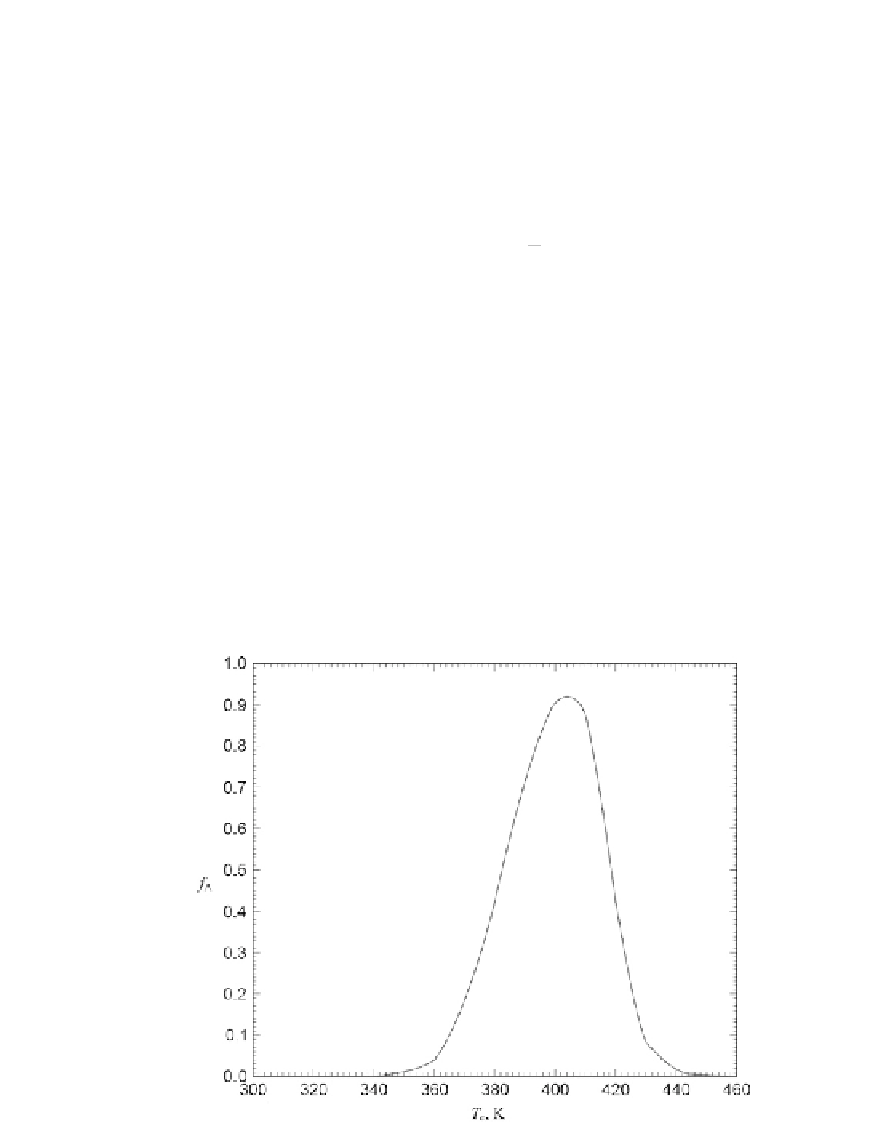Biomedical Engineering Reference
In-Depth Information
is to be carried out adiabatically in a flow reactor. The feed consists of pure A at
a temperature of 298 K and a pressure of 1 bar. The feed rate is 0.1 mol/s. Neglect
the pressure drop in the reactor.
(a)
Calculate the operating temperature and conversion from a CSTR of volume 2 m
3
.
Indicate the stability of your solution.
(b)
Calculate the volume of a PFR for a conversion of 0.99. Comment on your findings.
(c)
Recalculate the volume of the PFR for a conversion of 0.99, but the feed to the
reactor is preheated to 500 K.
The additional data are
k ¼ 10
11
exp
s
1
E
RT
E
R
¼ 18
;
000
K;
D
H
R
¼
60 kJ/mol-A;
;
C
PA
¼
120 J/(mol
$
K);
C
PB
¼
80 J/(mol
$
K);
C
PC
¼
40 J/(mol
$
K).
16.8.
The elementary reversible liquid-phase reaction
A % B
is to be carried out in a CSTR with a heat exchanger. Pure A enters the reactor at
a molar flow rate of 10 mol/min. The inlet temperature is the same as the ambient
temperature of the fluid in the heat exchanger, T
0
¼
T
N
¼
320 K. For your convenience,
the fractional conversion of A is given as a function of the effluent temperature, T
e
,in
Fig. P16.8
. Assume that the heat exchanger capacity, U
0
A, can be changed at will.
What is the value of U
0
A required to obtain the maximum conversion, and what is
the reactor temperature?
Additional data: M
A
¼
M
B
¼
58 kg/kmol, C
PA
¼
C
PB
¼
167.4 J/(mol
$
K),
D
H
R
¼
334.7 kJ/mol at 400 K, V
¼
10 l and Q
0
¼
1 L/min.
FIGURE P16.8






Search WWH ::

Custom Search